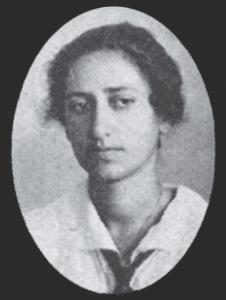Mary Lea Heger (Shane) (1897-1977)

Courtesy of Bancroft Library, UC Berkeley
Mary Lea Heger grew up in Belvedere, across the bay from San Francisco. She majored in astronomy at Berkeley as an undergraduate, class of 1919 and received her PhD in Astronomy in 1924. As an undergraduate, Heger enjoyed the small classes and friendliness of the astronomy professors. During her senior year she was hired as a teaching assistant to instruct celestial navigation to naval officers. In her oral history Heger states that her pursuit of an astronomy doctorate was accidental. While aiming to obtain some observatory experience at Lick, she discovered that an idea she had while an undergraduate “just panned out…and became a ready-made thesis.” “I don’t think I meant to take a PhD when I went up” to Mount Hamilton in 1919. [1] Unlike the usual progression from coursework to research, she conducted observations at Mount Hamilton during her first year in the doctoral program. Describing her research problem as “irresistible” she said, “It was as though the thesis came and said, ‘Take me’.” Heger is credited with a major discovery: observing and researching the Diffuse Interstellar Bands 5780 Å and 5797 Å fifteen years before her contemporary P.W. Merrill, a fellow Berkeley PhD astronomer who spent his career at Mt. Wilson. She was one of the first people to detect sodium atoms in interstellar space and in doing so initiated “a substantial field of research.” [2]

© Regents of the University of California. Courtesy Special Collections, University Library, University of California Santa Cruz. Lick Observatory Photographs
From Celestial Observers: Sixteen Berkeley Women Doctoral Graduates in Astronomy 1913-1952
By Sheila Humphreys
[1] Shane, M. L, & Calciano, E. S. (1969). Mary Lea Heger Shane: The Lick Observatory.
[2] Tony Misch pointed out the impact of Heger’s research, documented in this article: Benjamin McCall and Elizabeth Griffin. “On the Discovery of Diffuse Interstellar Bands,” 2013. https://royalsocietypublishing.org/doi/full/10.1098/rspa.2012.0604
[3] S. Vasilevskis and D. E. OsterBrock. Charles Donald Shane: A Biographical Memoir. National Academy of Sciences Washington D.C., 1989.
[4] https://www.ucolick.org/main/explore/archive.html
